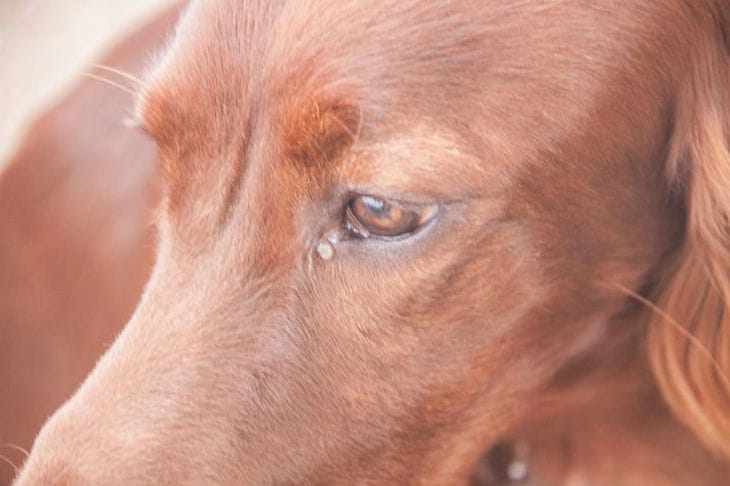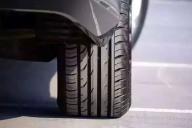Dogs often experience anxiety when separated from their primary caregiver because they are very afraid that the owner may not return.
It is important to fix this problem in time.
Anxiety itself is nothing more than a state of alertness when signs of danger appear. It is a natural reaction of the body.
This self-preservation mechanism is known as the "fight or flight" system and is present in both animals and humans.
The problem arises when the body recognizes as "dangerous" a situation that is actually harmless.

What is separation anxiety in dogs
Does your pet howl as soon as you get home or destroy everything around him when he's alone? Your pet may be suffering from a behavioral problem called separation anxiety.
Separation anxiety is a mixture of stress, fear, anxiety, and depression that a pet suffers from when left alone or separated from its primary caregiver.
This is not unusual, as it is normal for animals to behave this way when the person they consider to be in charge leaves the house, regardless of other family members.
This pathology is reflected in the pet's behavior, and all this is associated with stress.
Separation anxiety develops due to a high degree of dependence on the owner. However, it can also occur if the animal is not confident in itself.
This kind of dependence is very harmful to the dog's mental health, so it is better to find a way to relieve the anxiety that arises in the absence of the owner.
Possible reasons
It is not known exactly what factors lead to a pet becoming overly attached to its owner, but there are factors that influence this:
- Genetic factors.
- Breed.
- Previous abuse or neglect.
- Insufficient socialization.
- Excessive care on the part of the teacher.
- A sudden change in habits (moving).
Puppies who spend less time with their mother develop more independent personalities. They are also more self-confident than puppies who have not had the opportunity to be alone.
Symptoms of Separation Anxiety
One sign that your dog is starting to suffer from anxiety is if he becomes overly excited when you come home (jumping on you, urinating, etc.).
Destructive behavior. Biting and destroying objects in the house (doors, shoes, clothes). Remember that this is not revenge for leaving him alone, but uncontrollable emotions that prompt him to such behavior.
Excessive barking before you leave the house or upon returning home.
Toilet in inappropriate places: on the bed, in the rooms, etc.
Self-destruction is rare and consists of excessive licking, biting and scratching of one's own body, which is a result of chronic stress suffered by the animal.
Depression, apathy to most stimuli.
As soon as you notice these alarming signs, you should immediately contact a dog ethologist who will help you solve the problem. As a rule, separation anxiety in dogs worsens over time, so do not ignore the first signs.
What can you do about anxiety?
If you realize that your dog is indeed suffering from separation anxiety, the best thing you can do is to tire him out. This will help him stay calm longer.
Walk your dog before you leave or go away - it helps a lot. The dog will sleep in your absence.
Reward your dog when you return home if he has not made a mess or attacked you.
This will make the dog aware of its behavior when you are not around. Also, ignore the dog if it is too boisterous when you come home, because by pampering it or trying to calm it down, you are letting it know that being restless is acceptable and that it will be rewarded with attention.
Wait to greet your dog until he has calmed down, this way you will avoid "over-stimulating" him every time you come home. Your dog needs to learn to spend time alone, and it is your responsibility to do so.
But you shouldn't leave your dog alone for a long time. If you leave your dog for short periods of time and gradually increase the time, you will train your pet to be alone if you need to go to work or other important things.
This way the dog will understand that you will return and it will not be a stressful situation for him.
Coping with Separation Anxiety
Separation anxiety occurs with varying degrees of intensity depending on the individual dog.
The situations in which this condition occurs also vary. For example, some animals behave calmly in the mornings and during the day when their caregiver is not at home, but cannot stand being left alone at night.
You should pay attention to situations that provoke such behavior.
Tips for Reducing Separation Anxiety
Most severe cases of separation anxiety in dogs should be treated directly by a veterinarian. However, if your pet suffers from mild separation anxiety, you can try some behavior modification tips. For example:
Train your dog to recognize signals that you are about to leave the house.
Dogs feel safer when they learn to recognize "signals." To help them recognize these signals, repeat the same actions before leaving the house.
Enrich the environment.
Your pet needs a variety of toys and objects to distract him while you are away. This will relieve stress and reduce anxiety.
Use essential oils (fragrances). There are several natural plants (lavender, coconut, valerian) that produce relaxing aromas for both pets and humans. They can help reduce anxiety and ease the dog's condition.
Before using any of these strategies, it is important to try to identify the cause of the anxiety, as people often confuse separation anxiety with boredom.
If your dog is acting normally but starts scratching at the door or howling after eleven to twelve hours of being left alone, he is probably bored.
Previously we wrote about how to make brushing enjoyable for your pet.








